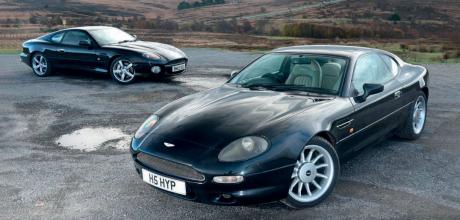1997 Aston Martin DB7 3.2 Automatic vs. 2003 Aston Martin DB7 GT 5.9
To mark the 30th anniversary of the DB7’s public debut, we look at the car’s development and importance to Aston Martin’s history before comparing a 3.2 with a late 5.9 GT
THE DB7 AT 30
STAIRWAY TO SEVEN
WORDS & PHOTOGRAPHY PAUL WALTON
WHY IT REMAINS AN IMPORTANT CAR
We celebrate three decades of the Aston Martin DB7 by exploring the car’s history and development before driving an early 3.2 and late 5.9 GT
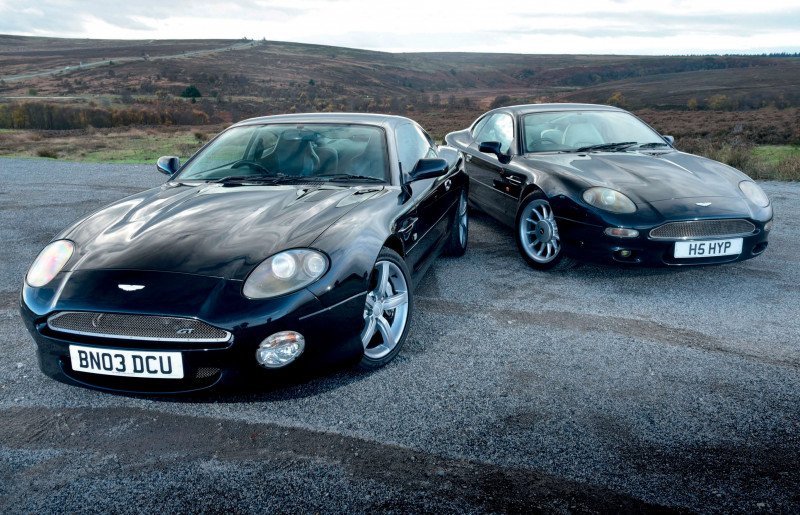
Due to its elegant and handsome design, the DB7 is easily one of the best-looking Aston Martins from the last three decades. It was also – at the time – the company’s most successful car and helped the brand to become more affordable and accessible, paving the way for the even higher volume Gaydon-built models.

Yet the DB7 hides a secret – from the engine to the body, the chassis to the suspension, the car shares more than a little DNA with another manufacturer. Its development took over a decade and the car only became an Aston Martin at the last minute due to a secret, backroom agreement.
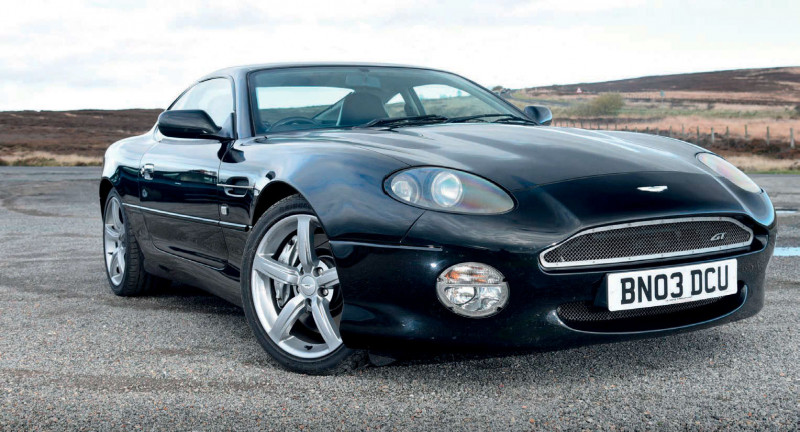
To mark 30 years since the debut of this landmark car, we’re looking at its complicated gestation before trying two beautiful but very different models.
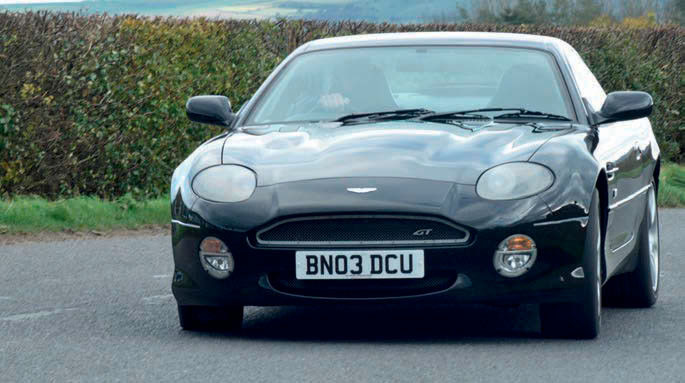
Judging by our own 1997 3.2 that we’ve assembled with a late 5.9 GT from 2003, the DB7 looks every inch the Aston Martin. The soft curves, long bonnet and perfectly balanced proportions all hint at those that came before it, making the car a fitting tribute to the earlier models with the famed DB name.

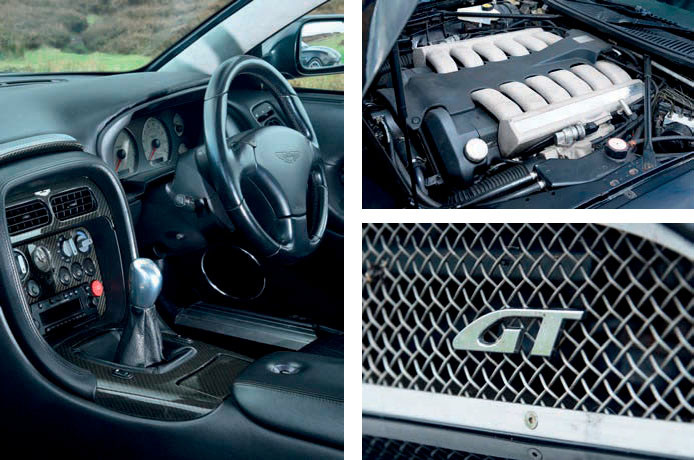
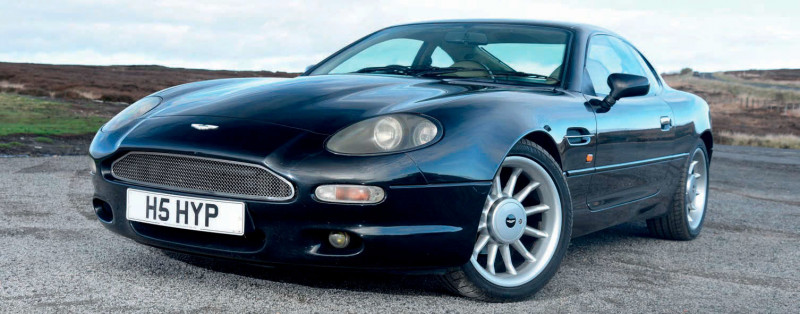
Yet its origins don’t go back to Newport Pagnell but rather Coventry and Jaguar’s Browns Lane design studio. In the early Eighties, the British company needed funding from parent company, Leyland, to finish developing its new saloon (the eventual XJ40). Jaguar’s then engineering director, Jim Randle, quickly realised its chances of securing the cash injection would be improved if a sports car was developed using the same chassis and drivetrain.He asked Jaguar’s studio team to design something appropriate, leaving it to the company’s founder, Sir William Lyons, to choose the winner.
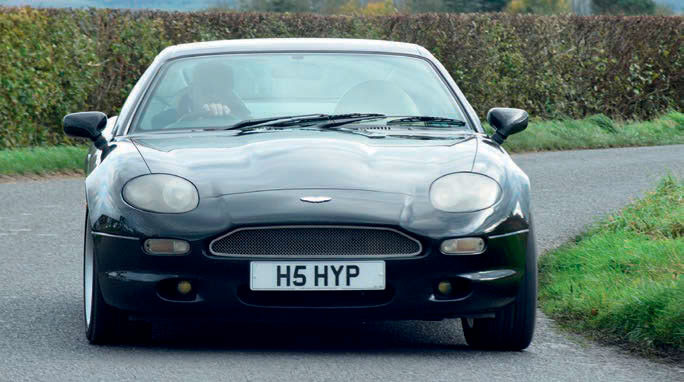
The one he pointed his stick at was by a young, South African designer, Keith Helfet, who had only joined the company in 1978. With him unashamedly influenced by Jaguar’s past cars – the D- and E-types especially – it featured similarly soft lines to both. “For me, the origami [more commonly known as ‘wedge’] styling fashion from the mid-Seventies to the early Eighties was completely unappealing. I don’t do lines, I don’t do square lines; I do flowing sculpture and that’s what Jaguars are about,” Keith explained to me during a 2018 interview about the car.
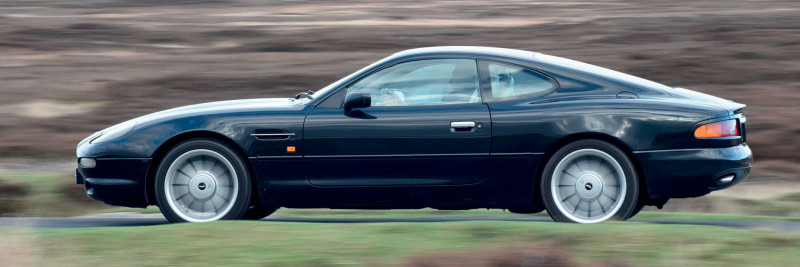
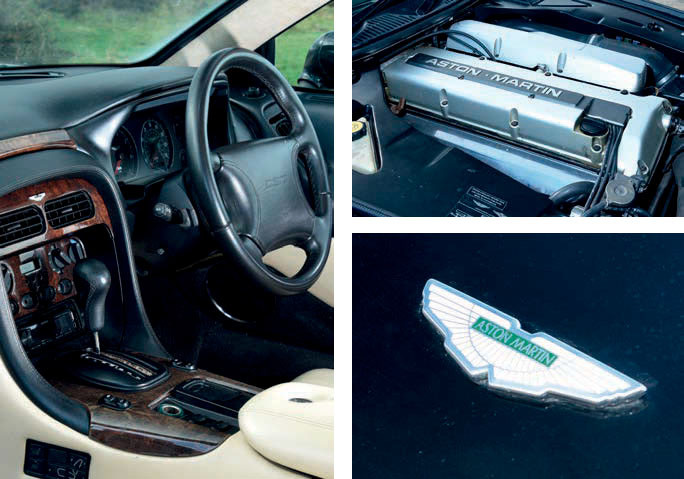
In mid-1980, Jim Randle presented the business case for the saloon and sports car to the BL board in the ballroom of London’s Grosvenor Hotel and Keith was there to talk through his sketches. “It was my first taste of corporate glamour,” he says. Approval was given in February 1981, as was the required £80 million that kicked off the project. After Keith worked alongside Sir William himself to define the design (internally known as the XJ41), by the mid-Eighties three full-size running prototypes in open, closed and targa styles had been built by the German coachbuilder, Karmann. At this point, the project was still moving towards its original 1986 launch date, having been added to Jaguar’s official product plan in 1982.
It was to use Jaguar’s all-new AJ6 engine, which was later turbocharged, resulting in 330bhp. That was an impressive figure for the mid-Eighties when a Porsche 911 Turbo had 280bhp. Four-wheel drive – which by the mid- Eighties was becoming more popular – was also later added.
But these additions meant the car was becoming too heavy, too complicated and its development costs were too high. These issues, coupled with the fact that Jaguar’s new owner, Ford, wasn’t interested in the car because it had been started before it took control, resulted in the programme being cancelled in 1989. Yet Keith didn’t give up on the XJ41 and worked on another, cheaper way to see it put into production. “A few months later, I went to see Jim and said with the same wheelbase and same track width, plus the A-posts in the same place, you could put the body on the XJ-S platform. He tookmy proposal to JaguarSport [a separate company owned 50/50 by Jaguar and TWR to build sportier models] and, at the board meeting, Tom Walkinshaw said, ‘We could build that.’”
Although now called Project XX and under Walkinshaw’s control, it was still a Jaguar product and Keith remembers writing a brief on behalf of the studio director at the time, Geoff Lawson, explaining what could and couldn’t change to the design.
But, unbeknown to Keith, Jim and everyone else at Jaguar, Walkinshaw approached Ford with an idea; if the car was rebadged as an Aston Martin (also owned by the American giant) it could be sold for a much higher purchase price. Unsurprisingly, Ford’s executives agreed.
Despite the change in branding, the car’s specification – including the Jaguar chassis and engine – were kept. Although the design was largely left alone, it was subtly transformed into an Aston Martin by TWR designer, Ian Callum. The Scot had joined Walkinshaw in 1991 after 11 years at Ford and Ghia where he’d worked on the Escort RS Cosworth and RS200 plus several show cars. This, though, would be his first full design.
“I hadn’t done a complete car on my own before, without anybody saying, ‘Well, that’s rubbish, you have to change that,’” said Callum in Andrew Noakes’s 2006 book, Aston Martin DB7: The Complete Story. “You haven’t got bosses coming in every two days saying, ‘I hate that, I don’t like that.’ My only judge was me and that’s quite a steep learning curve.”
One of the major changes Callum made was the addition of the traditional Aston radiator grille, spending time analysing the shape of previous models. “The grille was fascinating,” continued the Scot in Noakes’s book. “I’ve grown to really understand what an Aston grille is.”
The position of the radiator opening was vital, too, and Callum experimented with height. “The first grilles were actually toolow and I had to try their position up and down, up and down…” The other major change he made to the design was to pull the screen further forwards.
As mentioned earlier, the Jaguar straight-six was retained rather than a new V12 that was currently under development by Ford. “Walter Hayes [Aston Martin’s then chairman] wanted a six,” said Callum in The Complete Story. “He had a price bracket in mind and the V12, I think, was just too expensive.”
Even an outsourced six-cylinder also fitted with Hayes’s view that the car was the true successor to the iconic Aston Martins of the Sixties that were all powered by the famous twin-cam straight-six. “I very much wanted an engine that carried on DB-ism,” Hayes said in a 1993 interview. “We were continuing a distinguished heritage. If you don’t respect the heritage you should goand work for someone else.” But it wasn’t the same turbocharged version that was originally fitted to the XJ41 project in the Eighties. Hayes was instead keen on using a supercharger by the American power specialist, Eaton, that Ford already had experience with for the sixth-generation Thunderbird from 1989. When added to a 3,228cc version of the Jaguar straight-six, it produced 335bhp, 112bhp more than the normally aspirated 4.0-litre version of the engine fitted to the XJS from 1991.
It was soon found that the engine sat too high and was proud of the bonnet line. Since a power bulge was considered too Jaguar-like, the only solution was to drop the motor, achieved by redesigning the front subframe, which carried both the suspension and engine mounts.
After heavy lobbying from Callum, the rear suspension was also modified toimprove the car’s stance. As a result of being produced in a hurry and under a tight budget, many of the car’s minor components were raided from Ford’s growing parts bin that included Mazda 323 rear lights since they matched the kind of curve Callum needed to minimise rear overhang. “I wish we’d had the money to do individual lamps,” admitted Callum in The Complete Story, “but they’re behind frames so you don’t recognise them.”
Since Walter Hayes wanted chromed door handles, these too came from Mazda, because the 323 estate was the only car Walkinshaw’s team of engineers could find that featured this rather old-fashioned finish. Finally, much of the interior’s switchgear came from Ford while Jaguar supplied the electric seat controls and instrument panel.
“All manufacturers obtain components from outside suppliers,” defended Walkinshaw about this heavy parts recycling during an interview in the June 1993 issue of Automobile Magazine. “It’s ridiculous to spend a fortune designing something like an airbag system when we can get one off the shelf from Jaguar. There was never any talk of designing a car that was brand new from the ground up. It was essential to use components available within the Ford family.”
To save weight and increase production times, the bonnet, bumpers, sill, bootlid and roof panel were originally all made from a plastic-type composite material. “Doing it the old Aston Martin way would have been impossibly expensive for the sort of car the DB7 has to be,” explained the company’s operations director, Nick Fry, to Automobile Magazine. “For instance, it takes 25 worker hours to make just one front fender in hand formed aluminium.”
Yet despite its mixed parentage and money saving, the result was still a handsome and beautifully proportioned coupe that looked every inch the Aston Martin. The fact that it was named DB7, forever linking it to the classic David Brown era of cars, no doubt helped this. “I was nervous about calling it a DB7 because it seemed a huge presumption to go back and pinch David Brown’s name,” admitted Hayes in an interview at the time. “But he was over the moon about it.”
When the project became an Aston Martin it was renamed NPX for Newport Pagnell Experimental but the car had littleto do with the company’s historical home. It was instead developed and later built at JaguarSport’s Bloxham facility where the XJ220 had been built between 1992 and 1994. “We couldn’t have built the DB7 in Newport Pagnell,” admitted Walter Hayes during a 1994 interview. “There isn’t room for it. I discovered Jaguar had no plans for the Bloxham factory once the XJ220 production is finished. I said, ‘Can we have it?’ and they said, ‘Yes’.”
Renamed Aston Martin Oxford, it was more of an assembly plant since little of the car was actually made there. The chassis were still produced by Jaguar’s CastleBromwich facility and transported down the road to Bloxham where they were fitted with bodyshells by Motor Panels that was also based in Coventry. The original composite panels were supplied by a thirdparty specialist.
The completed shells were initially shipped to Rolls-Royce’s factory in Crewe for painting, but a paint shop was later opened at Bloxham meaning this was done on site.
A Coventry-based upholsterer, Callow & Maddox Ltd, was initially responsible for the interior, but this was also taken back inhouse when the interiors were later made at Aston’s main Newport Pagnell facility before being sent the 35 miles to Bloxham for final assembly and fitting.
It took around four weeks to paint, build and quality-control a DB7 and although not quite as handbuilt as the pre-existing V8 models, no robots were used either and the production line was hands-on with no automated track.
Incredibly, the DB7 made its debut at the 1993 Geneva Motor Show in March, a mere two years after Project NPX had started. Despite many other new models being announced at the same time, the Aston was the star of the show. “What a stunning car,” was Jeremy Clarkson’s view as he stood on Aston Martin’s show stand during an episode of Top Gear.
Although the car’s £78,500 price tag made it £38k more expensive than the XJS 6.0 V12 and £6,000 over the Porsche 928 GT, it was £100k less than the Vantage. This relative cheapness opened up the car and Aston Martin to a wider audience than any of the previous labour-intensive and more expensive models. “You will have little problem convincing yourself of its value,” said Autocar in its 19 October 1994 issue. Following further development, the DB7 didn’t reach production until September 1994 when the press finally got their hands on the car. Thankfully, the reports were largely complimentary. “Even without the emotional knee-jerk reaction to a car of such beauty,” continued Autocar’s 1994 test, “the DB7 is a triumph. In nigh-on every area of engine and chassis performance it has what it takes to hold its own against the opposition and, in many spheres, shows them the way home.”
Judging by our 1997 example, that’s still the case. Its smooth lines haven’t dated as much as other cars of the era including the angular BMW 8-Series E31cthat I tested or the 993-generation of Porsche 911 and it remains one of the best-looking cars from the Nineties to have been designed and produced in this country. Even the outsourced lights and handles don’t bother me. That’s not something that can be said about the interior. Although the leather and veneer tick all the right boxes for an £80k car, the obviously Ford Fiesta-sourced switchgear and glued-on veneer cheapens its appearance.
The Jaguar-sourced straight-six might have been older than the invention of the wheel when the DB7 arrived in 1993, but with 335bhp, it still feels strong and powerful. But with our example fitted with a four-speed automatic gearbox that lacks the responsiveness of the five-speed manual that was also available, the engine needs to be constantly worked hard to get the best from it. Plus, the gruff roar of the engine mixed with the scream of the supercharger means the cockpit is louder than a steel factory, further adding to the impression that the DB7 is older than it is.
Although, as mentioned earlier, the first examples had composite panels, these were replaced in 1996 by traditional steel versions, which saw the DB7’s weight rise from 1,725 to the 1,825kg of this example. You’re always aware of the car’s bulk and it lacks the agility of lighter rivals such as the Porsche 911 and Ferrari 355.
To give the Aston a little credit, the steering is sharp and accurate while the nicely damped suspension helps the car remain composed but not at the expense of ride and comfort.
Although not a perfect car, the DB7 3.2 is still a likable one and it’s easy to understand why 2,473 were built. But other than the introduction of the pretty Volante in 1996 and a few limited editions, it wasn’t updated until 1999 when the 3.2 was replaced by the V12-powered Vantage.
This 5.9-litre was a Ford unit that started life as an after-hours project by the company’s engineering team in Dearborn, USA. Conceptually, it was two 3.0-litre Duratec V6s placed end-to-end, but with a new head and block by Cosworth (that would build the production engine) plus improved cooling.
It was originally imagined that the engine would power the DB7 and the Lagonda Vignale (a concept which debuted at the 1993 Geneva Show, but which never reached production). It wasn’t until 1999 when the DB7 V12 Vantage was revealed at the Geneva Motor Show that the engine fnally found a home. With 420bhp resulting in a 185mph top speed and a 0-60mph time of 5.2 seconds, it transformed the compact Aston into an entry-level supercar.
The suspension was beefed up by 15-20 percent and new front wishbones and uprights reduced steering off set, making space for enormous 335mm-ventilated Brembo brake discs. At the rear, a new cruciform-shaped brace was added below the final drive to reduce axle tramp under acceleration.
Physically, the Vantage differed from the 3.2 by a larger radiator grille plus larger intakes required to keep the V12 cool. To make room for these, the indicator and fog lamps were combined, their shape and location apparently inspired by the company’s racing cars from the Fifties and Sixties including the DBR1 and DP215.
The bottom of the front valance now formed a deep skirt that lined up with the sill covers along the side of the car, plus there was a new rear valance which included new larger tail pipes and new style of alloys. The result was a subtle yet successful refresh that helped keep the now six-year-old model relevant for the new millennium.
With its meaty performance and improved handling, the press was impressed by the new V12 model. “The Vantage is a big step towards putting Aston Martin on the road to greatness,” said Autocar in its 23 June 1999 issue.
And despite the original £92,500 price tag, it’s clear the customers liked it, too, since 4,142 Vantages were produced, split almost 50/50 between coupe and convertible.
Yet this wasn’t the end of the DB7’s development since Aston revealed the even faster GT in 2002. The V12 was remapped to produce another 15bhp while the torque jumped from 400 to 410lb ft. There was also a racing twin-plate clutch and the six-speed gearbox had shorter throw actions. The ride height was slightly lowered and the suspension bushings beefed up along with revised damper settings and stiffer rack mountings for better feedback.
The result was a harder, faster and more driver-focused Aston that, like a shot of adrenaline, helped the now nine-year-old car turn back the clock. “No question, the GT is the DB7’s Rumble in the Jungle, one last convincing stab at greatness before the faded seaside and quiet life beckons,” was Autocar’s opinion in its 26 February 2003 issue. “But hell’s bells, it’s enough to make you believe growing old will be okay when it finally does happen.”
Certainly, like one of those ‘before and after’ diet adverts, due to the five-spoke alloys, discreet ducktail rear spoiler and aluminium mesh grille, the GT looks much more aggressive than the 3.2 next to it. The interior is largely the same layout as the older model’s but the gearlever and ventilation switchgear are now in aluminium plus the carpet is rich Wilton.
But when the GT was launched in 2003, it cost over a hundred grand so it needed these new shiny bits to warrant the high cost. This example has the optional carbon veneer on the dash, which looks much more contemporary than the standard wood veneer.
There’s also a bright red starter button on the console that’s as exciting to use as it is to look at, the big engine firing immediately when pressed. It takes all of a few hundred yards for me to realise this is a completely different animal to the 3.2. With the V12 much more eager to deliver its power, the acceleration arrives faster and feels significantly – almost frighteningly – harder. With the scream of 12 cylinders filling the cabin, I finally reach down, grab the shiny gearlever and change up.
Two gearboxes were available; a sequential automatic transmission in the GTA and a six-speed manual by Tremec as fitted to this GT model. Offering the right amount of resistance plus short, snappy throws, it aids the car’s acceleration more than another 10bhp might.
As I head towards a corner, I flick the lever down into third, gently squeeze the brake pedal, which scrubs off enough speed for me to throw the car confidently into the bend. With the fat 18in Bridgestones finding grip and the beefed-up suspension keeping it calm and composed, I’m able to throw the heavy car into the curve with more confidence than I did the 3.2.
Admittedly, the ride is less compliant than the straight-six’s and I can feel more of the road surface through the wheel but it’s still a magnificent car. And despite the design’s age, it showed what DB7 was truly capable of. When production ended in 2003 after just 302 GTs were made, it did so on a high.
Plus, while the DB7 made Aston more accessible in terms of image and performance, the GT paved the way for the harder, more driver-focused Gaydon-era of cars that followed including the Vanquish and V8 Vantage.
So, while its heritage might be secret, the DB7’s importance to the company’s history and its continuing capability in either straight-six or V12 form is clear to see.
TECHNICAL DATA 1997 Aston Martin DB7 3.2
- Engine: 3,228cc 6-cyl Supercharged
- Max Power: 335bhp
- Max Torque: 360lb ft
- 0-60mph: 5.5secs
- Max speed: 165mph
- Transmission: 4-speed auto
- Weight:1,825kg
- Price new: £82,500
- Value now:£20k-£25k
TECHNICAL DATA 2003 Aston Martin DB7 GT 5.9
- Engine: 5,935cc V12 natural aspirated
- Max Power: 435bhp
- Max Torque: 410lb ft
- 0-60mph: 4.8secs
- Max speed: 185mph
- Transmission: 6-spd manual
- Weight: 1,622kg
- Price new: £104,500
- Value now: £40k-£60k
TIMELINE
- A full-size mock-up of the XJ41 outside Wappenbury Hall, the home of Jaguar’s Sir William Lyons (far right, next to Keith Helfet) in 1982
- Keith Helfet’s original sketch for the XJ41 project from 1980
- A clay model of the now Aston Martin-led Project NPX in the early Nineties
- The DB7’s debut at the Geneva Motor Show in March 1993
- Production of the car started at Aston Martin Oxford in Bloxham in September 1994
- In 1999 the V12 version replaced the 3.2 and featured a slightly redesigned nose
- A handsome DB7 Volante joined the coupe in 1996


